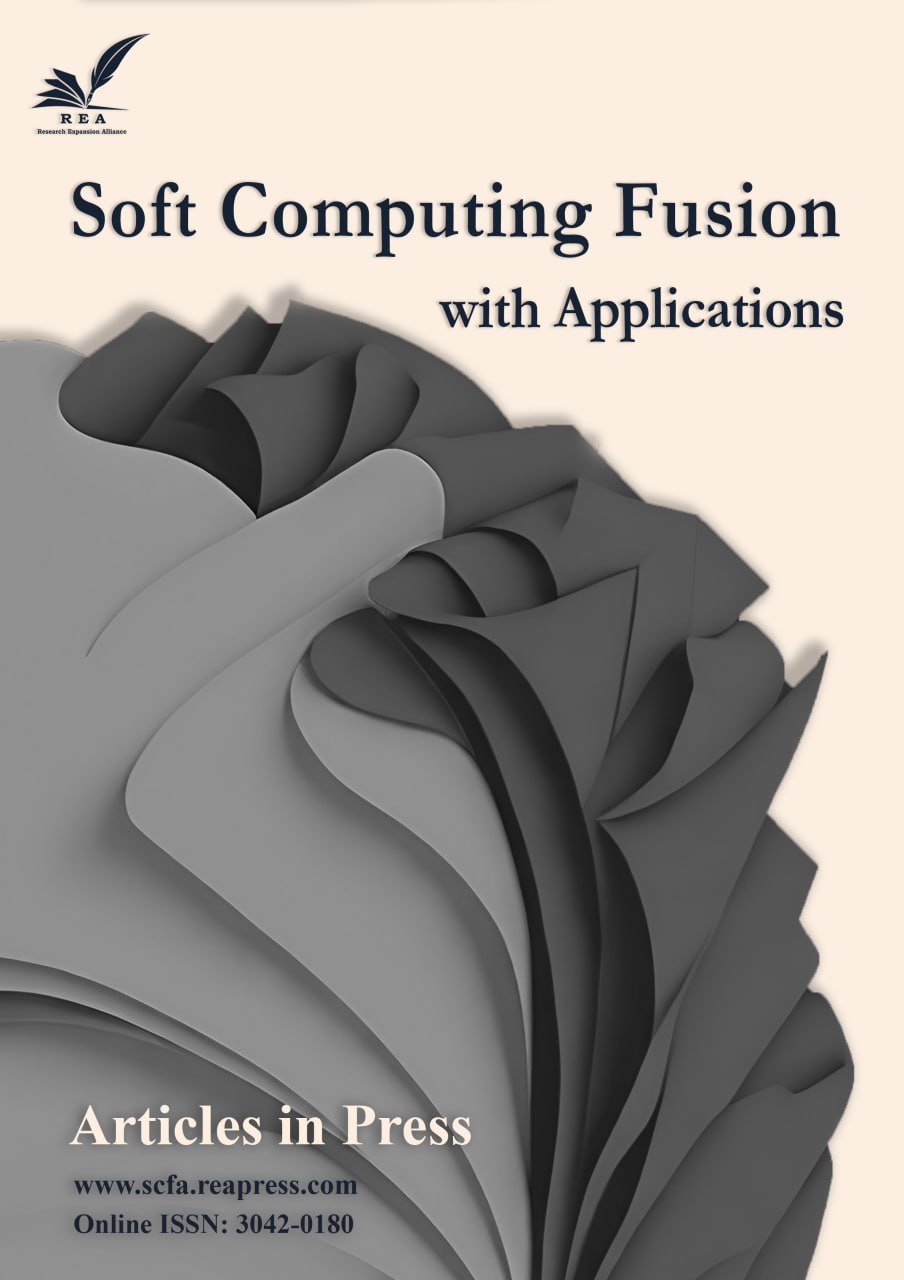Hyperweighted and Superhyperweighted MultiGraphs: Foundations and Real-World Applications
Abstract
A weighted graph is a graph in which each edge carries a numerical weight, typically representing cost, distance, or intensity. Recently, the notions of the Hyperweighted Graph and the Superhyperweighted Graph were introduced.
A Hyperweighted Graph is a graph where each edge is assigned a nonempty set of real‐valued weights, capturing multiple metrics simultaneously (e.g., distance, cost). A Superhyperweighted Graph assigns each edge a nested hierarchy of weight‐sets (sets of sets of real numbers), enabling multi‐level attribute modeling. Extensive research has also been conducted on weighted MultiGraphs.
In this paper, we extend these ideas by exploring the classes of Hyperweighted MultiGraphs and Superhyperweighted MultiGraphs, and analyzing their fundamental properties. This concept extends weighted MultiGraphs by incorporating the notions of Hyperweighted Graphs and Superhyperweighted Graphs. We expect that these extensions will stimulate further research on graph algorithms and real‐world applications of graph theory.
Keywords:
Weighted Graph, Uncertain Graph, Graph Theory, HyperWeighted GraphReferences
- [1] Takaaki Fujita. Advancing Uncertain Combinatorics through Graphization, Hyperization, and Uncertainization: Fuzzy,
- [2] Neutrosophic, Soft, Rough, and Beyond. Biblio Publishing, 2025.
- [3] Takaaki Fujita. Hyperweighted graph, superhyperweighted graph, and multiweighted graph. Pure Mathematics for Theoretical
- [4] Computer Science, 5(1):03, 2025.
- [5] Florentin Smarandache. Foundation of superhyperstructure & neutrosophic superhyperstructure. Neutrosophic Sets and Systems,
- [6] (1):21, 2024.
- [7] Florentin Smarandache. Extension of hyperalgebra to superhyperalgebra and neutrosophic superhyperalgebra (revisited). In
- [8] International Conference on Computers Communications and Control, pages 427–432. Springer, 2022.
- [9] Florentin Smarandache. SuperHyperFunction, SuperHyperStructure, Neutrosophic SuperHyperFunction and Neutrosophic
- [10] SuperHyperStructure: Current understanding and future directions. Infinite Study, 2023.
- [11] Hala S Own, Nehal Abd Al Aal, and Ajith Abraham. A new weighted rough set framework for imbalance class distribution. In
- [12] International Conference of Soft Computing and Pattern Recognition, pages 29–34. IEEE, 2010.
- [13] Tinghuai Ma and Meili Tang. Weighted rough set model. In Sixth International Conference on Intelligent Systems Design and
- [14] Applications, volume 1, pages 481–485. IEEE, 2006.
- [15] Nayani Sateesh, Pasupureddy Srinivasa Rao, and Davuluri Rajya Lakshmi. Optimized ensemble learning-based student’s
- [16] performance prediction with weighted rough set theory enabled feature mining. Concurrency and Computation: Practice and
- [17] Experience, 35(7):e7601, 2023.
- [18] Nithya Rekha Sivakumar and Abeer Al Garni. Efficiency of weighted rough set model in proactive protocol using grid. In 2018
- [19] st International Conference on Computer Applications & Information Security (ICCAIS), pages 1–5. IEEE, 2018.
- [20] Holy-Heavy M Balami, Aliyu G Dzarma, and Mohammed A Mohammed. Weighted soft set and its application in parameterized
- [21] decision making processes. International Journal of Development Mathematics (IJDM), 2(1):131–144, 2025.
- [22] T Pathinathan and P Mahimairaj. Weighted fuzzy sets. International journal of technology and engineering, 8(5):766–769,
- [23] Linfeng Gou and Yu Zhong. A new fault diagnosis method based on attributes weighted neutrosophic set. IEEE Access,
- [24] :117740–117748, 2019.
- [25] Florentin Smarandache and Mumtaz Ali. Interval valued bipolar fuzzy weighted neutrosophic sets and their application. A A,
- [26] (1):2, 2016.
- [27] Fangyuan Zhang, Mengxu Jiang, and Sibo Wang. Efficient dynamic weighted set sampling and its extension. Proceedings of the
- [28] VLDB Endowment, 17(1):15–27, 2023.
- [29] Jian Yang and Joseph Y-T Leung. A generalization of the weighted set covering problem. Naval Research Logistics (NRL),
- [30] (2):142–149, 2005.
- [31] Ajoy Kanti Das. Weighted fuzzy soft multiset and decision-making. International Journal of Machine Learning and Cybernetics,
- [32] (5):787–794, 2018.
- [33] Sunil Mathew and MS Sunitha. Cycle connectivity in weighted graphs. Proyecciones (Antofagasta), 30(1):1–17, 2011.
- [34] A. Buck and James M. Keller. Evaluating path costs in multi-attributed fuzzy weighted graphs. 2019 IEEE International
- [35] Conference on Fuzzy Systems (FUZZ-IEEE), pages 1–6, 2019.
- [36] Chris Cornelis, Pieter M. M. De Kesel, and Etienne E. Kerre. Shortest paths in fuzzy weighted graphs. International Journal
- [37] of Intelligent Systems, 19, 2004.
- [38] Landon Butler, Alejandro Parada-Mayorga, and Alejandro Ribeiro. Convolutional learning on multigraphs. IEEE Transactions
- [39] on Signal Processing, 71:933–946, 2023.
- [40] Gordon F Royle. Graphs and multigraphs. In Handbook of Combinatorial Designs, pages 757–765. Chapman and Hall/CRC,
- [41] Hiroshi Nagamochi and Toshihide Ibaraki. Computing edge-connectivity in multigraphs and capacitated graphs. SIAM Journal
- [42] on Discrete Mathematics, 5(1):54–66, 1992.
- [43] Vijay Ingalalli, Dino Ienco, and Pascal Poncelet. Mining frequent subgraphs in multigraphs. Information Sciences, 451:50–66,
- [44] Oana Andrei and Hélene Kirchner. A rewriting calculus for multigraphs with ports. Electronic Notes in Theoretical Computer
- [45] Science, 219:67–82, 2008.
- [46] Emma Caizergues and Elie de Panafieu. Exact enumeration of graphs and bipartite graphs with degree constraints. In European
- [47] Conference on Combinatorics, Graph Theory and Applications, pages 254–262, 2023.
- [48] Pavel Chebotarev and Elena Shamis. The forest metrics for graph vertices. Electronic Notes in Discrete Mathematics, 11:98–107,
- [49] Brian Alspach and Cun-Quan Zhang. Cycle covers of cubic multigraphs. Discrete mathematics, 111(1-3):11–17, 1993.
- [50] David Joyner, Minh Van Nguyen, and Nathann Cohen. Algorithmic graph theory. Google Code, pages 72–76, 2010.
- [51] Bernhard Haeupler, Richard Hladík, Václav Rozhoň, Robert E Tarjan, and Jakub Tětek. Bidirectional dijkstra’s algorithm is
- [52] instance-optimal. In 2025 Symposium on Simplicity in Algorithms (SOSA), pages 202–215. SIAM, 2025.
- [53] Antonio Rivero Ostoic. multigraph: Plot and manipulate multigraphs. 2016.
- [54] Alain Bretto. Hypergraph theory. An introduction. Mathematical Engineering. Cham: Springer, 1, 2013.
- [55] Claude Berge. Hypergraphs: combinatorics of finite sets, volume 45. Elsevier, 1984.
- [56] Nanao Kita. Bidirected graphs i: Signed general kotzig-lovász decomposition. arXiv: Combinatorics, 2017.
- [57] Rui Xu and Cun-Quan Zhang. On flows in bidirected graphs. Discrete mathematics, 299(1-3):335–343, 2005.
- [58] Azriel Rosenfeld. Fuzzy graphs. In Fuzzy sets and their applications to cognitive and decision processes, pages 77–95. Elsevier,
- [59] Sebastian Pardo-Guerra, Vivek Kurien George, and Gabriel A Silva. On the graph isomorphism completeness of directed and
- [60] multidirected graphs. Mathematics, 13(2):228, 2025.
- [61] Sebastian Pardo-Guerra, Vivek Kurien George, Vikash Morar, Joshua Roldan, and Gabriel Alex Silva. Extending undirected
- [62] graph techniques to directed graphs via category theory. Mathematics, 12(9):1357, 2024.
- [63] Florentin Smarandache. Extension of HyperGraph to n-SuperHyperGraph and to Plithogenic n-SuperHyperGraph, and Extension
- [64] of HyperAlgebra to n-ary (Classical-/Neutro-/Anti-) HyperAlgebra. Infinite Study, 2020.
- [65] Florentin Smarandache. Introduction to the n-SuperHyperGraph-the most general form of graph today. Infinite Study, 2022.


